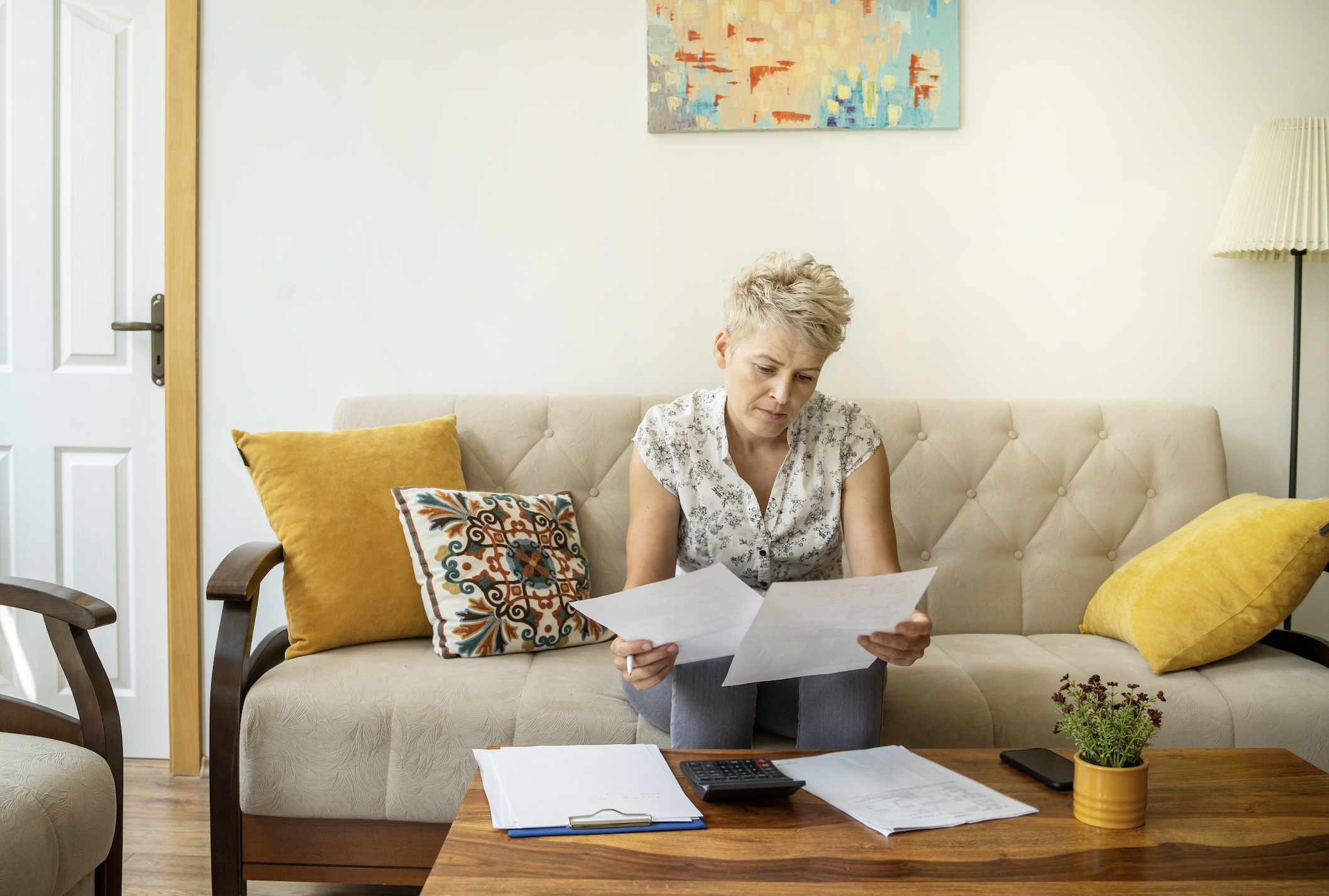The Coming War Over Digital Currencies—What It Means
The war over money is heating up.
For the first time in more than a century, the dollar’s supremacy is being challenged. The rise of cryptocurrencies and “stablecoins” has spurred a rethinking of what a currency is, who regulates it, and what it means when it’s no longer controlled by a national government. The dollar itself may be getting an overhaul, transformed into a digital currency that can travel instantly around the world, holding up against Bitcoin or any other token.
The old battle lines between national currencies are being redrawn by an onslaught of crypto insurgents. These privately issued currencies are fragmenting monetary systems, banking, and payments. The landscape calls to mind the “wildcat” money era of the mid-1800s, when a scrum of banks supplied their own notes—prompting the Federal Reserve to establish a national currency. Commerce doesn’t run as efficiently without a “no questions asked” currency, and governments risk losing control over fiscal and monetary policies if multiple currencies vie for economic activity.
What kind of upheaval will the new currencies wreak? No one knows. And there are plenty of legitimate use-cases for cryptos and applications built on top of blockchain networks. But the technology is so disruptive that it’s triggering calls for a cascade of new regulations, and it’s spurring governments around the world to think about digitizing their currencies, at least partly to remain relevant and maintain control over their economic interests. The Fed itself is expected to weigh in with its own report in coming days.
“The advent of digital currencies may allow people and businesses to get around banks,” says Thomas Hoenig, a former president of the Federal Reserve Bank of Kansas City. “If cryptos become a substitute for the dollar, they could create a separate money environment that would make monetary policies more difficult to implement.”
Cryptos are now worth $2.1 trillion, doubling in value this year alone. Bitcoin, worth nearly $900 billion, recently became legal tender in El Salvador—a controversial monetary shift in the country, but one that may pave a path for other developing nations. Capital is flooding into companies that are building everything from trading platforms to exchanges for trading new digital assets like non-fungible tokens, or NFTs. Investors are also trading tokens on decentralized exchanges like Uniswap, and they’re earning high yields by “staking” their tokens to network operators.
Cryptos and other tokens aren’t (yet) close to denting the $19.4 trillion U.S. money supply or the 50% of international trade that’s invoiced in dollars. One measure of the dollar’s hegemony—its share of central bank reserves—has been declining for 25 years, but at 60% it remains three times that of its closest rival, the euro. Vast markets of global commodities are priced in the dollar. Trillions of dollars in sovereign and commercial debt are pegged to the “risk free” rate of Treasuries.
But challenges to the dollar posed by blockchain technologies aren’t so easy to dismiss.
Cryptos, stablecoins and NFTs are becoming the native tokens of gaming and e-commerce platforms. Virtual-reality platforms are being designed to incorporate NFTs or other private currencies. As economic activity shifts to these walled gardens, banks and government-backed money could wind up on the outskirts.
Challenging the Incumbents
Big money is at stake, especially for banks and other companies that effectively charge “rents” for moving dollars around. North American banks, card networks, and nonbank “fintechs” earn huge sums for payment and credit-card services—$500 billion a year, according to data from consultancy McKinsey. That amounts to an estimated 2% toll on U.S. gross domestic product—much of it in credit card fees.
Many banks and financial companies, including Visa (ticker: V) and JPMorgan Chase (JPM), are working to integrate cryptos and stablecoins, aiming to capture fees on brokerage, custodial, and payment services. But they face technologies that threaten their revenues—and, perhaps more important, access to data.
Solana, for instance, is a relative newcomer in crypto. Developed by a former software engineer at Qualcomm, the network claims to handle 65,000 transactions per second at a cost of $0.00025 per transaction, making it far faster and cheaper than bigger rivals like Ethereum. It’s taking off for stablecoins and NFTs—new digital playthings for art, video, and music. Solana’s blockchain network is also attracting high-frequency trading firms that see it as a platform for ultrafast data feeds and trading applications for cryptos, stocks, and other securities.
BTIG analyst Mark Palmer calls Solana the “biggest blockchain breakout of 2021,” noting that it’s powering a much-anticipated “metaverse” game called Star Atlas that uses NFTs for in-game assets. “The speed that Solana’s architecture facilitates is a literal game-changer in the NFT gaming world,” he wrote in a recent report. The network crashed this past week as usage surged, pulling its token down. But its fall may also reflect some profit-taking after a 9,166% rally this year, pushing the token from $1.50 to $139, giving it a $41 billion market value.
The Battle for a Digital Dollar
One of the biggest financial-policy battles that’s shaping up in Washington is over digitizing the dollar—turning it into a token that may be issued directly to consumers by the central bank. A much-anticipated report is expected soon from the Fed, outlining its perspective on a central-bank digital currency, or CBDC. Other countries, led by China, have already launched CBDCs in pilot programs, putting pressure on the Fed to develop a rival.
A digital dollar could take many forms. The basic idea is that the central bank would issue a new digital instrument for transactions and deposits, alongside physical cash or entries on a bank ledger (essentially deposits). Payments could settle in real time, proponents argue, and fees could fall sharply since the Fed doesn’t have a profit incentive. That could be a huge win for the 6% of the population that’s “unbanked” and pays steep fees for check-cashing. People sending money overseas could also pay much lower fees for “remittances,” cutting out middlemen like Western Union (WU) and MoneyGram.
International pressure is building as China and other countries take the lead in CBDCs. “The time has passed for central banks to get going,” said Benoît Coeuré, head of innovation at the Bank for International Settlements, in a speech in September. “We should roll up our sleeves and accelerate our work on the nitty-gritty of CBDC design.”
Fed officials seem split on the idea, however, let alone the specifics. Governor Lael Brainard, who may be in line for Chairman Jerome Powell’s job next year, has indicated support for a CBDC. But governor Christopher Waller is a skeptic, describing a digital dollar as a “solution in search of a problem.” As he sees it, commercial banks and the Fed are already developing real-time settlement; stablecoins may put pressure on banking fees, he argues, and most of the unbanked don’t even want accounts, according to surveys. “The government should compete with the private sector only to address market failures…and I don’t think that CBDCs are the case for making an exception,” he said in a speech last month.
Politicians, not Fed officials, are likely to have the final word. A bill backed by Sen. Sherrod Brown (D., Ohio) envisions the Fed offering “digital dollar wallets.” Commercial banks would maintain the wallets, entitling owners to a share of the bank’s reserves held at the Fed. For consumers without access to branches, he sees the Postal Service turning into a digital-dollar bank.
None of this appeals to bankers, of course, who worry that the Fed could siphon away their deposits and undermine lending. “The drawbacks appear to be more pronounced than the benefits, at least in the U.S.,” says Rob Morgan, a senior vice president with the American Bankers Association.
JPMorgan is calling for “minimally invasive CBDCs,” according to a recent report by Joshua Younger, head of U.S. fixed-income strategy. CBDC deposits that are limited to $2,500 would mitigate the potential for the Fed to “cannibalize” deposits, he argues. He also says that U.S. banks are already “partially nationalized,” with 15% of their assets held as Fed reserves and Treasury securities, levels that may increase if the Fed got into commercial banking.
Taming the Crypto Wild West
Regulators aren’t sitting idly as digital currencies plant roots. Federal and state agencies are working on rules to keep tabs on the industry. Gary Gensler, the new chairman of the Securities and Exchange Commission, laid out an expansive agenda to regulate crypto tokens, trading, and lending platforms in a Senate hearing this past week. “Large parts of the field of crypto are sitting astride of—not operating within—regulatory frameworks,” he said. Automated exchanges could be in for more scrutiny, along with lending platforms like BlockFi, where investors can earn high yields on crypto deposits.
Congress sees plenty of opportunity to raise revenue by taxing crypto. Democrats in the House have included “digital assets” in their $3.5 trillion reconciliation bill, including a provision that would subject cryptos to “wash sale” rules, which prevent investors from claiming a tax loss if they buy the same security within 30 days (before or after) of the sale. That measure alone could raise an estimated $16 billion over a decade.
Still, it won’t be easy for regulators to tax or police the entire industry. Crypto brokerages outside the U.S. handle much of the trading volume. Exchanges like Uniswap use protocols and “smart contracts” to process transactions, operating independently of any centralized entity like a bank or brokerage firm. “The underlying protocol is operating on its own, and users can still trade the assets, irrespective of the SEC,” says Anthony Georgiades, a crypto investor with Innovating Capital. “It’s sufficiently decentralized so that even if they try to delist the assets, they couldn’t.”
Washington still can’t agree on whether to classify cryptos as a currency, security, or commodity. The Internal Revenue Service calls cryptos “property,” while the Commodity Futures Trading Commission has oversight over the crypto futures market, and a patchwork of agencies oversee the banks and exchanges.
A few states aren’t waiting around for more federal rules. BlockFi is in trouble with regulators in New Jersey and Texas, states where it could soon be illegal for residents to open an account with the company. BlockFi CEO Zac Prince says uniform federal banking rules are needed. “It’s gonna come down to federal regulators…creating a path for this type of activity to happen,” he said at a conference this past week.
Stablecoins pose perhaps the biggest regulatory conundrum. The tokens have a fixed value of $1, typically pegged to the dollar. More than $110 billion are in circulation, primarily in Tether and USD Coin. Investors use the coins as dollar substitutes to transact on exchanges; they’re also gaining traction for international payments and peer-to-peer, or P2P, transactions.
A game-changing “stablecoin” may be coming from Diem, a consortium of 26 companies, originally conceived by Facebook (FB). Diem is trying to launch a “regulatory friendly” version, says Christian Catalini, chief economist of the Diem Association. Its underlying network, backed by companies including Uber Technologies (UBER), Coinbase Global (COIN), and Spotify Technology (SPOT), will levy fees expected to be less than 0.10% per transaction, far below what banks and card networks now charge.
Diem could be a blockbuster. The token could quickly gain traction for things like Uber fares, Gucci bags on Farfetch (FTCH), or subscriptions on Spotify—cutting out payment middlemen with lower transaction fees. The network is also designed for P2P transactions, including remittances, and the underlying blockchain technology could move programmable digital assets in the future. The Diem coin itself, however, might be short-lived if a digital dollar launches. “We’ve committed to phasing out the token when there is a digital dollar,” Catalini says.
Diem has pledged to hold high-quality assets as reserves for its coins, backed at least one-to-one by cash or Treasuries. It might not have much choice: Regulators are starting to view stablecoins as a source of financial instability, and they may be close to issuing new rules on capital and reserve requirements for issuers.
The concern is that coin issuers aren’t backing their tokens with 100% cash reserves, using proxies like commercial paper, bank “repo” agreements, and other securities. That might be fine in normal market conditions, but it could be destabilizing in a crisis. Money-market funds have experienced runs that spilled over into other areas, prompting the Fed to stabilize the market, most recently in March 2020. “It’s a central problem that the Fed worries about from a stability point,” says Morgan Ricks, a law professor at Vanderbilt University and former Treasury official.
Tether, the largest stablecoin, has run into legal trouble over its reserves, agreeing last February to more disclosure in a deal with the New York attorney general. But its reserve composition remains opaque. Tether, backed by the Bitfinex exchange, holds only 3.9% of the coin’s reserves in cash and 2.9% in T-bills, according to its latest disclosure, with 65% in commercial paper. Tether says its tokens are “always 100% backed by our reserves.”
The Treasury Department recently convened a task force to develop a framework for regulating stablecoins. Some leading economists say it’s overdue. “Policy makers may view stablecoins as an up-and-coming financial innovation that does not pose any systemic risk,” wrote Yale University economist Gary Gorton in a recent paper co-authored with a Fed attorney, Jeffery Zhang. “That would be a mistake because this is precisely when policy makers need to act.”
The Dollar Won’t Go Away
The dollar won’t go down easily. It has deflected multiple threats since President Richard Nixon ended its peg to gold in 1971, turning it into a free-floating “fiat” currency. A bout of inflation in the 1970s, the rise of the Japanese yen in the 1980s, and the euro’s ascent in the early 2000s all failed to knock it down.
A common marketing case for Bitcoin, the largest crypto, is that it’s “digital gold” with a fixed supply of 21 million tokens; by design, it can’t be increased, unlike fiat currencies that may be depreciated by governments for political or economic gains. Central banks have embarked on a money-printing spree—the Fed’s balance sheet has ballooned to $8.3 trillion from $1 trillion in 2008. Crypto backers argue that the dollar’s purchasing power will diminish due to inflationary forces tolerated by central banks, while cryptos will hold more of their value.
Yet for all the carping about currency “debasement,” or an erosion of purchasing power in the dollar, the economics are far more complex. Inflation hasn’t proved deeply problematic in North America since the early 1980s. Before the pandemic, it was so low that policy makers worried about deflation. Rising labor costs and global supply-chain disruptions pose near-term inflationary threats, but their persistence isn’t assured. The forces that have kept a lid on inflation—including aging populations in developed economies and productivity gains from technology—aren’t going away.
History is also on the dollar’s side in the sense that governments have never allowed rival currencies to usurp their authority. Technologies make the job tougher but not insurmountable, and the greater the success of currencies like Bitcoin, the more governments may try to kill it.
What It Means for Investors
What’s the impact for investors in crypto-infrastructure stocks and currencies? For now, not much. Crypto stocks and prices for digital currencies have climbed for months, despite tighter regulatory scrutiny. Capital is flooding into the industry as use-cases for cryptos, stablecoins, and decentralized-finance, or DeFi, networks expand. New rules will take months or years to be written and implemented by regulatory agencies. A digital dollar could become a partisan battle that gets bogged down in Congress.
Clarity from regulators may be welcomed, since they could open the floodgates to investment products and services, expanding the market with advisors and institutional fund managers that oversee trillions of dollars in global assets. Banks also want a level playing field to cut down on “regulatory arbitrage” that may now give pure-play crypto companies an advantage.
The crypto industry, for its part, is also becoming a lobbying force. The industry exerted its influence in August as lawmakers added tax-reporting requirements on crypto companies to the Senate infrastructure bill. The lobbying blitz failed, but the battle isn’t over—it will probably shift to regulatory agencies.
As for the dollar, the very currencies that are nipping at its heels could help preserve it. Cryptos and other tokens haven’t been tested in a crisis when investors dump anything with a whiff of risk. The diciest currencies fall the hardest during panics, and cryptos could follow precedent. “If there is a crisis, all these parallel currencies will take flight into the sovereign,” predicts Hoenig. Digital or not, the dollar will live to fight another day.
 Copyright 2020, Dow Jones & Company, Inc. All Rights Reserved Worldwide. LEARN MORE
Copyright 2020, Dow Jones & Company, Inc. All Rights Reserved Worldwide. LEARN MORE
This stylish family home combines a classic palette and finishes with a flexible floorplan
Just 55 minutes from Sydney, make this your creative getaway located in the majestic Hawkesbury region.
CommSec research reveals this state is leading the country in economic growth, unemployment, construction and dwelling starts
South Australia is currently the strongest state or territory economy in the country, with economic activity 9.1 percent above its decade-average in the December quarter, according to CommSec research. NSW was second with economic output running 8.6 percent above its long-run average, followed by Victoria with 8.5 percent, the ACT at 8.3 percent and Western Australia at 6 percent.
Economic activity in both Queensland and Tasmania was 4.5 percent above average while the Northern Territory underperformed its long-term average by 0.5 percent.
The CommSec research ranks states and territories on several key economic metrics and compares the latest quarterly data with each area’s decade average. South Australia ranks first on four of the eight key indicators. They are economic growth, unemployment, construction and dwelling starts.
Western Australia ranks first on population growth and business and equipment investment. Population growth has been a key element in Perth and regional Western Australia becomingthe country’s hottest property markets over the past 12 months. CoreLogic figures released this week show home values are up 21.1 percent in Perth and 13.3 percent in the state’s regions.
Despite high inflation, retail spending remained above the long-term average in all states and territories in the December quarter. The ACT led with retail expenditure 12.2 percent higher than its long-term average, followed by Western Australia with 11.3 percent, Victoria at 11.2percent and Queensland at 11.1 percent.
Queensland is in the top spot for new home loans. Propelling this is very strong internal migration and a doubling of the First Home Owners Grant to $30,000 from 20 November last year. New home loans issued to first home buyers in November surged to a 15-month high, according to data from the Australian Bureau of Statistics. Queensland is currently the second strongest housing market, with home values up 16.1 percent in Brisbane and 11.2 percent in regional areas over the past year.
In all states and territories except the Northern Territory, housing finance commitments remained above decade averages in the December quarter. The value of home loans in Queensland was 21.1 percent higher than the state’s long-term average. The next strongest was Western Australia, up 17.5 percent, South Australia, up 14.2 percent, and the ACT, up 12 percent. The new CoreLogic data reveals 15 consecutive months of growth in the national median price, despite high interest rates.
This stylish family home combines a classic palette and finishes with a flexible floorplan
Just 55 minutes from Sydney, make this your creative getaway located in the majestic Hawkesbury region.






















